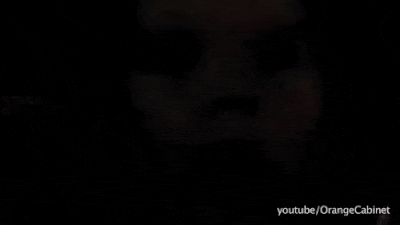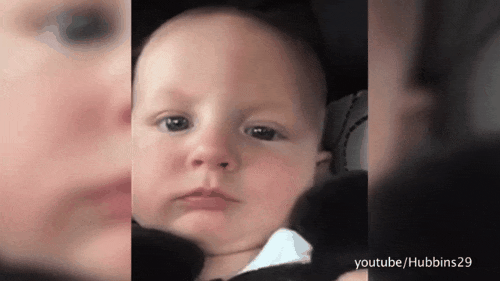Some things we have learned from our experiments on infants and children at the Riddled Research Laboratory:
1. Some children insist on just the right ratio of vodka in a screwdriver before they cooperate in a test.
Image may be NSFW.
Clik here to view. Image may be NSFW.
Image may be NSFW.
Clik here to view.
2. Transient electrical scalp stimulation with a perfectly harmless voltage does not stimulate the growth of hair. Still, it was worth a try.
Image may be NSFW.
Clik here to view. Image may be NSFW.
Image may be NSFW.
Clik here to view.
3. The parents' reactions are entertaining when you dress up the infants as bananas and apologise for "the temporary side-effect" when you give them back at the end of the session. How we laughed!
Image may be NSFW.
Clik here to view. Image may be NSFW.
Image may be NSFW.
Clik here to view.
Image may be NSFW.
Clik here to view. The late 1960s and early 1970s were the golden age of secretive DoD experiments into traumatising babies with visual barriers and model train sets. Experience teaches that unethical research with non-consenting human subjects are more successful when there is a cover story, and Bower recruited his subjects under the guise of studying 'object permanence'.
The late 1960s and early 1970s were the golden age of secretive DoD experiments into traumatising babies with visual barriers and model train sets. Experience teaches that unethical research with non-consenting human subjects are more successful when there is a cover story, and Bower recruited his subjects under the guise of studying 'object permanence'.
Image may be NSFW.
Clik here to view. The real goal of Project RECKLESS SLEEPER was that the extremity of train-induced terror would awaken the infants' latent powers and cause them to defend themselves with laser-beam eyes [right]. In an unintended side-effect, a generation of policy-makers and urban planners grew up with an irrational, abiding phobia about tracked transport, and found every excuse to obstruct and underfund that mode of mass transit, which is why Americans can't have
The real goal of Project RECKLESS SLEEPER was that the extremity of train-induced terror would awaken the infants' latent powers and cause them to defend themselves with laser-beam eyes [right]. In an unintended side-effect, a generation of policy-makers and urban planners grew up with an irrational, abiding phobia about tracked transport, and found every excuse to obstruct and underfund that mode of mass transit, which is why Americans can't have nice things Amtrak. Meanwhile a generation of moral philosophers grew up torturing themselves and their students with 'trolley dilemmas'.
Anyway, Piaget's child psychology teaches us that young infants still remember their prior existence in a universe of flux and evanescence, and lack the concept of 'object permanence', so that when an object disappears from view into a tunnel they assume that it no longer exists.
The corollary follows that when infants travel into a tunnel they assume that it's themselves who cease to exist. This explains some of their behaviour.
I was too old to be a subject when I fall into the care of a Piagetian psychologist in 1970 or thereabouts. I know his academic alignment because of the perspective-taking and constructivist tests he applied, and also because when I stroll back through the corridors of memory and look at the bookshelves in his office I can see the distinctive spine of Piaget and Inhelder (so the date must have been after 1969, when the first English edition came out).
1. Some children insist on just the right ratio of vodka in a screwdriver before they cooperate in a test.
Image may be NSFW.
Clik here to view.
 Image may be NSFW.
Image may be NSFW.Clik here to view.

2. Transient electrical scalp stimulation with a perfectly harmless voltage does not stimulate the growth of hair. Still, it was worth a try.
Image may be NSFW.
Clik here to view.
 Image may be NSFW.
Image may be NSFW.Clik here to view.

3. The parents' reactions are entertaining when you dress up the infants as bananas and apologise for "the temporary side-effect" when you give them back at the end of the session. How we laughed!
Image may be NSFW.
Clik here to view.
 Image may be NSFW.
Image may be NSFW.Clik here to view.

Image may be NSFW.
Clik here to view.
 The late 1960s and early 1970s were the golden age of secretive DoD experiments into traumatising babies with visual barriers and model train sets. Experience teaches that unethical research with non-consenting human subjects are more successful when there is a cover story, and Bower recruited his subjects under the guise of studying 'object permanence'.
The late 1960s and early 1970s were the golden age of secretive DoD experiments into traumatising babies with visual barriers and model train sets. Experience teaches that unethical research with non-consenting human subjects are more successful when there is a cover story, and Bower recruited his subjects under the guise of studying 'object permanence'.Image may be NSFW.
Clik here to view.
 The real goal of Project RECKLESS SLEEPER was that the extremity of train-induced terror would awaken the infants' latent powers and cause them to defend themselves with laser-beam eyes [right]. In an unintended side-effect, a generation of policy-makers and urban planners grew up with an irrational, abiding phobia about tracked transport, and found every excuse to obstruct and underfund that mode of mass transit, which is why Americans can't have
The real goal of Project RECKLESS SLEEPER was that the extremity of train-induced terror would awaken the infants' latent powers and cause them to defend themselves with laser-beam eyes [right]. In an unintended side-effect, a generation of policy-makers and urban planners grew up with an irrational, abiding phobia about tracked transport, and found every excuse to obstruct and underfund that mode of mass transit, which is why Americans can't have Anyway, Piaget's child psychology teaches us that young infants still remember their prior existence in a universe of flux and evanescence, and lack the concept of 'object permanence', so that when an object disappears from view into a tunnel they assume that it no longer exists.
The corollary follows that when infants travel into a tunnel they assume that it's themselves who cease to exist. This explains some of their behaviour.
BB commentor crenquis: "Every time that I find myself
in a warm moist tunnel I start making that face..."
in a warm moist tunnel I start making that face..."
I was too old to be a subject when I fall into the care of a Piagetian psychologist in 1970 or thereabouts. I know his academic alignment because of the perspective-taking and constructivist tests he applied, and also because when I stroll back through the corridors of memory and look at the bookshelves in his office I can see the distinctive spine of Piaget and Inhelder (so the date must have been after 1969, when the first English edition came out).
Universe of flux and evanescence



